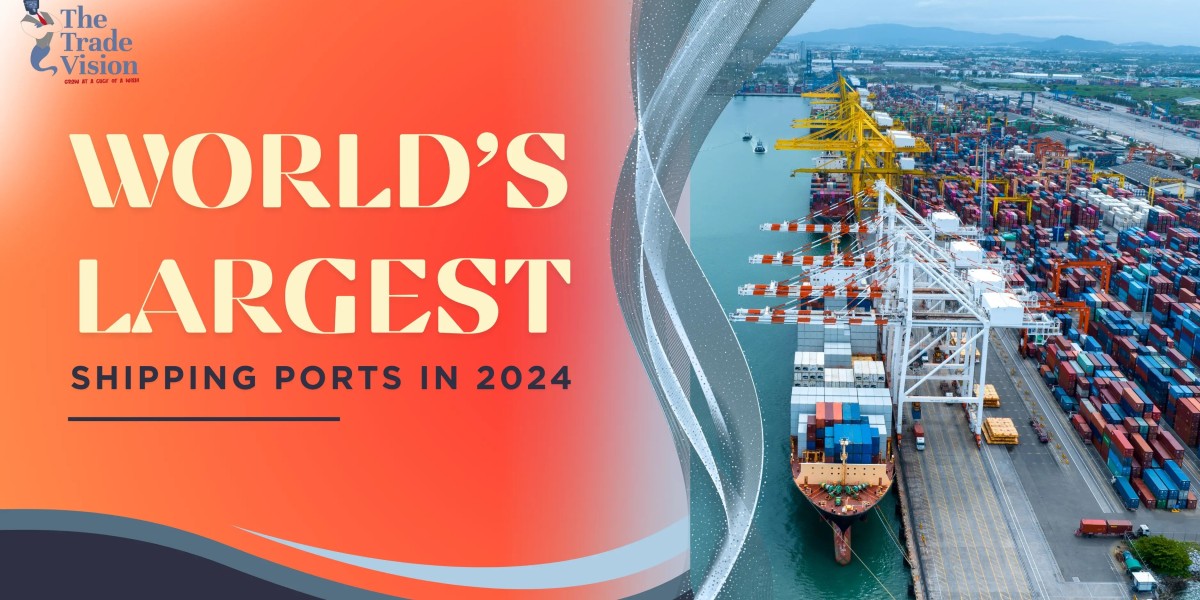Ports are the heart of international trade—the gateway for the bulk of the world’s goods. Whether it’s electronics from East Asia packed in containers or oil tankers in the Middle East, ports make it possible for goods to travel around the globe. Their size, capacity, and efficiency can make a difference in shipping costs, transit time, and even the integrity of global supply chains.
With international trade increasing every year, it’s important to know which ports are leading the way. For exporters, importers, logistics professionals, and policymakers, understanding the top ports is crucial.
The biggest ports are not only massive in scale and infrastructure but also act as significant economic engines and critical junctions between continents. They reflect the changing dynamics of global trade.
We’ve compiled a list of the Top 10 Largest Ports in the World, based on container traffic and total cargo volume. From China’s mega-ports to strategic hubs in Europe and the Middle East, these ports power our global supply chains.
1. Port of Shanghai, China
Annual TEU Volume (2024): 51.5 million
Shanghai is the busiest container port in the world, holding the top position for 14 years straight. Situated at the head of the Yangtze River, it connects China's industrial heartland to over 700 ports in more than 200 countries.
Key Facts:
UN/LOCODE: CNSHG
Serves an area of 3,500 sq km
43 terminals, 191 berths, 156 container cranes
Yangshan Phase IV: Largest automated terminal globally (6.3 million TEU)
350+ international shipping lines
Key Exports:
Electronics, machinery, vehicles
World’s top automotive shipping port in 2024: 3.63 million vehicles handled
Total trade volume: 11 trillion yuan (~$1.5 trillion)
2. Port of Singapore, Singapore
Annual TEU Volume (2024): 41.1 million
A global transshipment powerhouse, Singapore handles 20% of the world’s container transits and half of global crude oil shipments.
Key Features:
UN/LOCODE: SGSIN
67 berths, 130+ cranes
200+ shipping lines, 600+ connected ports
Tuas Port (under development) will be the world’s largest automated port by 2040
Trade Highlights:
Exports: Machinery, electronics, petroleum, chemicals
80% of container traffic is transshipment
World’s largest bunkering port
3. Port of Ningbo-Zhoushan, China
2024 TEU Volume: 39.3 million
Located in Zhejiang province, this is the world’s largest port by cargo tonnage—processing over 1.26 billion tons in 2022.
Key Features:
UN/LOCODE: CNNBG
191 berths, 39 deep-water berths
Five operational areas (Beilun and Meishan)
5G-powered smart port with driverless trucks and remote cranes
Trade Highlights:
Major exports: Machinery, electricals, textiles, toys
Bulk cargo: Iron ore, grain, oil
Key Belt and Road Initiative port trading with 190+ countries
4. Port of Shenzhen, China
2024 TEU Volume: 33.4 million
Comprising several terminals along Shenzhen’s coast, this port is a hub for high-tech exports and electric vehicles.
Key Features:
UN/LOCODE: CNSZX
140 berths, 18 container terminals
560 monthly ship calls, 130+ global container routes
Yantian terminal for mega vessels
Trade Highlights:
Rapidly growing BYD electric vehicle exports
Two-hour customs processing
Links to US, BRICS, and ASEAN supply chains
5. Port of Qingdao, China
Annual TEU Volume (2024): 30.87 million
Located on the Yellow Sea, Qingdao is a fast-growing export hub for Northeast Asia.
Key Features:
UN/LOCODE: CNQDG
4 port areas: Qianwan, Dongjiakou, North Harbour, Lubei
Asia’s 1st container terminal with automated handling
Channel depth: -22 meters
Trade Highlights:
Exports: Seafood, coal, chemicals
Connected to 450+ ports in 130+ countries
Trade value: $17.5 billion in just 2 months (2024)
6. Port of Guangzhou, China
Annual TEU Volume (2024): 26.07 million
Located on the Pearl River Delta, Guangzhou connects inland manufacturing regions to global trade.
Key Features:
UN/LOCODE: CNGZG
62 berths for 10,000+ ton vessels
Nansha Port Area supports vessels up to 150,000 tons
111 foreign trade routes, 30 dry ports
Trade Highlights:
Exports: Electronics, automobiles, coal, textiles
Homa Appliances exported 220,000 TEUs in 2024
Key player in China’s Free Trade Zone initiative
7. Port of Busan, South Korea
Annual TEU Volume (2024): 24.4 million
South Korea’s largest port and the second-largest global transshipment hub.
Key Features:
UN/LOCODE: KRPUS
40 km quay, capacity for 135 vessels
4 sub-ports: North, South, Gamcheon, Dadaepo
Automated terminal opened in 2023
Trade Highlights:
Exports: Integrated circuits, vehicles, and ship parts
13.5 million TEUs in transhipment volume (2024)
Links to 500+ ports in 150 countries
8. Port of Tianjin, China
Annual TEU Volume (2024): 23.29 million
As Beijing’s maritime gateway, Tianjin is Northern China’s leading port.
Key Features:
UN/LOCODE: CNTXG
217 berths, 72 for vessels over 50,000 DWT
World’s first zero-carbon automated container terminal
147 global container services
Trade Highlights:
Serves 600+ ports in 180 countries
Trade valued at $260 billion (2023)
Key corridors to Russia, Central Asia, and Korea
9. Port of Jebel Ali, UAE
Annual TEU Volume (2024): 15.5 million
The Middle East’s largest port and DP World’s flagship, Jebel Ali links Asia, Europe, and Africa.
Key Features:
UN/LOCODE: AEJEA
23 container berths, 134 sq km land area
Terminal 3: Among the world’s most advanced
25 km quay
Trade Highlights:
Imports: Iron, steel, wood, glass
Exports to: India, USA, Pakistan, Iraq
Processes 5 million tons of construction materials annually
10. Port of Rotterdam, Netherlands
Annual TEU Volume (2024): 13.8 million
Europe’s busiest port, Rotterdam connects deep-sea routes to European hinterlands.
Key Features:
UN/LOCODE: NL RTM
12,500 hectares, 70 km quaysides
500+ liner services
Seamless access (no sea locks/bridges)
Trade Highlights:
Europe’s top crude oil hub (100+ million tons/year)
Also handles grains, soybeans, industrial minerals
Contributes $29.6 billion to Dutch GDP (3.2%)
Get more: https://www.thetradevision.com/blogs/top-10-largest-ports-in-the-world-2024-ranking
Final Thoughts
These Top 10 Ports are the lifelines of global trade, supporting efficient freight movement, reducing delivery times, and connecting suppliers with consumers worldwide.
With 7 of the Top 10 ports located in China, it’s evident that Asia continues to dominate the global shipping landscape. Strategic ports in Singapore, Busan, Rotterdam, and Jebel Ali highlight the significance of connectivity and infrastructure.
As global trade evolves, these ports will be at the forefront—adopting automation, sustainability practices, and navigating geopolitical dynamics to remain competitive.
Stay informed with The Trade Vision for more updates on global shipping, trade intelligence, and the future of maritime logistics.







